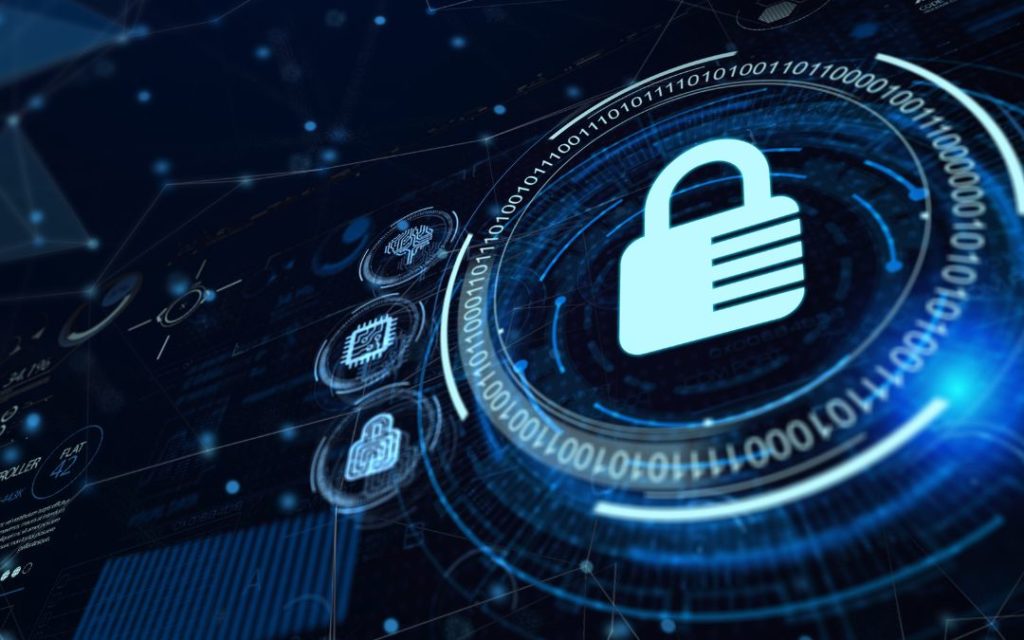
As cyber threats become more commonplace, office managers need to promote a positive security culture in their workplace. This guide provides practical advice on how to do this. Engaging and training staff effectively, collaborating with the Chief Information Security Officer (CISO), and fortifying your organization’s information security posture. By following these tips outlined in “Promoting a cyber-security culture: an office manager’s guide”, you can create a secure environment that combats emerging cybersecurity risks.
Short Summary
Office managers can promote a positive cyber security culture by setting expectations, providing resources and training.
Establishing trust and open communication with employees is key to creating an effective reporting system for incidents.
Partner with the CISO to create a secure environment through collaboration, and contact Operum.Tech today!
Establishing a Positive Cyber Security Culture
Creating a security culture within the organisation is essential to prevent cyber threats. A positive one not only reduces vulnerability but also encourages employee involvement and organisational stability. Office managers have an immense role in this process. They can lay out expectations, lead by example, and offer sources for employees to follow safety standards correctly.
Developing a secure atmosphere goes beyond just applying protection protocols. It involves building up an environment where workers feel empowered to take responsibility for their security measures. By generating awareness about cybersecurity as well as providing staff training, office supervisors can help individuals appreciate the value of taking part in protecting against digital hazards thus establishing their safe practices eventually.
The Role of Office Managers in Promoting Security Culture
Creating a secure atmosphere within an organization is imperative and office managers have the power to do this. They can set expectations, act as role models by taking part in security awareness training themselves and provide resources for employees so they are meeting requirements. To achieve healthy security culture, it’s important to create trust among staff members where issues can be reported without hesitation, enabling IT teams to take proactive steps before any bad situations arise due to a lack of information or education on what safety measures should look like.
Benefits of a Positive Cyber Security Culture
Having a positive cyber security culture is key for any organization, since it not only reduces the risk of breaches and improves employee engagement, but also strengthens general organizational resilience. To build up such a strong safety atmosphere, both companies and staff members need to be proactive in valuing its importance. By addressing all matters related to security as well as establishing effective policies, organizations can protect sensitive data while creating an environment where employees feel secure enough to carry out their jobs without worries thus maintaining a high standard within the business world. Promoting reporting when incidents take place assists in upholding a healthy cyber-security climate, making sure firms stay safe against threats they might face.
Implementing Security Awareness Training
Security awareness training is an essential way to empower employees and teach them the best practices needed for averting cyber threats. Regular courses on security topics help ensure that staff, from top management down to entry-level personnel, understand their responsibilities in maintaining cybersecurity within the organization and promoting a safe work environment. Such programs drastically lessen the risks of data breaches while encouraging employee participation with meaningful results, boosting organizational resilience.

By scheduling refresher training every couple of months, companies remain up-to-date about any new hazards they may be facing as well as able to form stronger defences against potential attacks thanks to creating more vigilant workers through comprehensive knowledge education coursework regarding safety protocols are always being implemented towards achieving this goal.
Types of Security Awareness Training
Security awareness training is important for the protection of company information. There are various forms such as classroom-based, web-based, and simulated phishing attacks to cater to different learning styles. To make security awareness successful, managers must enhance their teaching style and employ concise language so employees can feel empowered about cyber security topics. Relevant scenarios should be devised per department while also positively introducing software, if necessary create your material tailored according to staff needs too! Keeping these key points in mind will ensure that all employees remain engaged with their security training leading to higher levels of safety within an organization.
Ensuring Employee Participation
The importance of security awareness training cannot be stressed enough, and office managers should strive to create a continuous process that keeps employees motivated and aware. They can do so by using clear communication regarding the relevance of the training to daily tasks while providing engaging activities such as quizzes, games, real-life scenarios, etc. It is also beneficial for them to provide concise yet targeted sessions with practical tips which staff members could apply in their roles too. Introducing gamification methods along with customizing each session according to different departments helps build team spirit amongst workers when it comes to cyber threats they are expected to know about on an everyday basis.
Developing and Communicating Security Policies
Creating and communicating security protocols are essential in making sure that the workforce comprehends their obligations and expectations when it comes to cyber safety. These procedures can assist with creating clear guidelines for employees to follow, lessening any danger of breaches of security. These policies protect an organization and its staff members while keeping a good standing within the business world as well as ensuring compliance with data safeguards laws.
The steps required to develop and convey cybersecurity regulations are straightforward: define scope & objectives, draft policy, and review protocol. Communicate protocol information to personnel accurately – by engaging in this process effectively office managers will be able to craft a precise yet comprehensive cybersafety plan which acts as invaluable tooling for their corporation’s wellbeing risks management strategy.
Creating Effective Security Policies
To develop secure policies which are effective, it is important to engage all the necessary people involved in this procedure and let them take part so that everyone can provide their input. Determining potential dangers, gaining knowledge from other sources, and adding appropriate elements contribute to the successful creation of beneficial security protocols.
To keep up with industry standards when producing these policies, you should make sure they stay current by regularly providing training relating to safety measures for your organization’s staff members along with tweaking any guidelines according to what best suits your company’s requirements. This will ensure coverage of unique risks while keeping consistent consistency within the policy content.
Communication Strategies for Office Managers
Office managers can develop a strong connection with the Chief Information Security Officer (CISO) and build up an effective security culture by being responsive, recognizing their duties, and providing support as well as necessary resources. To ensure that employees possess complete knowledge of security protocols, they must utilize the seven security protocols. Cs of communication (see below for explanation in FAQ section) effectively send out newsletters, have regular meetings, or provide intranet updates. Communicating these policies through various channels in an efficient way while also making themselves available for any feedback from staff members concerning them, will enhance overall safety measures throughout business operations.
Encouraging Reporting of Security Incidents
Creating a secure atmosphere where employees are well-informed and encouraged to report security incidents is imperative for building trust, and transparency, and swiftly addressing issues. Office managers should establish an accessible channel (e.g., a hotline or email address) so that workers can share their security concerns without fear of reprisal while understanding the significance of keeping it confidential. To encourage this kind of culture regarding reporting security events, office administrators must ensure there will be consequences for those who do not use the system properly as well as rewards/recognition when they do follow the protocol correctly.
Establishing a Reporting System
Creating an efficient reporting system for employees to report any security issues or concerns is essential for a business’ safety. Establishing a team of people responsible for quickly responding and evaluating the reported incidents will help ensure that these occurrences are identified and handled swiftly.
Involving workers in both the alerting process as well as developing practices meant to protect whistleblowers contributes significantly towards creating an effective structure that can not only identify potential problems but also cultivate responsibility regarding their security among employees, thus reinforcing awareness when it comes to safeguarding against threats within workplaces.
Fostering Trust and Openness
Creating a setting of trust and openness about security issue reporting is imperative for the success of an organization’s safety attempts. To do this, office supervisors should lay out unambiguous policies that remove doubts, specialized terminology, and guess. They must bring in staff into both the incident report process as well as creating improvements in terms of protection. They have to guarantee that protocols are aimed at protecting whistleblowers who come forward when it comes to suspicious activities or hazards. By taking these steps, managers can fashion an atmosphere where people feel free to declare security events without fear of reprobation, resulting in them being more likely to be alert about potential risks which help quickly recognize as well as identify issues while also cultivating knowledge among personnel around safety measures alongside accountability within one another’s behaviour towards preventive actions from threats before becoming incidents entirely.
Collaborating with the Chief Information Security Officer (CISO)
Having an effective relationship with the Chief Information Security Officer (CISO) is necessary to reinforce an organization’s safety. This role includes creating and implementing a cybersecurity policy, fostering secure habits within staff members, and optimizing processes based on budgets available while being prepared for potential cyber risks.
To foster a positive security culture in one’s business, office managers must have insight into CISO responsibilities such as establishing security measures, managing threats adequately, and guaranteeing conformity with any relevant regulations or laws pertaining thereto. By maintaining communication lines open between employees and their counterparts in information protection operations of said organizations, they are capable of developing strong relationships which create successful results towards achieving the highest standard across all parameters concerning Data Protection & Cybersecurity practices advocated by CNIL guidelines.
Providing resources needed for them to succeed will surely help in securing your company’s core values around data privacy when aligning oneself alongside tech teams they supervise making sure this collaborative approach yields long-term solutions implemented effectively along the entire employee range.
Understanding the CISO’s Responsibilities
Risks associated with information security are the primary concern of a CISO, and they must ensure that these risks align with their organization’s objectives. Alongside this, compliance with applicable laws and regulations is also managed by them as well as responding quickly to any arising computer security incidents. Office managers need to recognize these responsibilities so that their own goals can be in line with those set out by the CISO. An effort that will bolster current protective measures towards protecting against threats from all angles, ultimately strengthening organizational resilience and stability.
Partnering with the CISO
For successful collaboration between CISO and office managers, they should focus on creating a strong relationship with each other. It is imperative to develop agreement in terms of objectives and promote risk management across the organization by communicating effectively while emphasizing a growth mindset as well as agility for desired results. Forming a professional network through participating in relevant industry events can prove advantageous too.
Aligning goals and objectives has immense importance when it comes to security efforts being coordinated within an enterprise, which will ultimately result in higher levels of safety awareness among employees along with creating responsibility towards such matters throughout different departments. This strengthens the company’s posture regarding its overall security along with building a culture around cyber-security-related issues besides helping managers come up with business cases if required eventually leading to positive outcomes.

Addressing Employee Behaviour and Bad Security Practices
To prevent security breaches, maintain the confidentiality of sensitive information, and cultivate a culture emphasizing cyber security among employees, employers must address staff conduct and bad practices in terms of safety. Organizations can identify activities like weak passwords or unsecured gadgets which have become widespread lately as well as sharing confidential details. This way they will be able to take action right away instead of waiting for an emergency by providing extra guidance about precautionary measures taken on these topics. Companies should also consider taking corrective actions such as policy modifications or disciplining personnel so they are aware of how vital protecting data truly is while creating a secure working atmosphere at the same time where both awareness & responsibility regarding cybersecurity reign supreme within their employee pool.
Identifying Risky Behaviours
Identifying risky behaviour concerning cyber security is critical for maintaining a secure environment and protecting sensitive data. To improve safety, office managers can take several steps to educate their employees to mitigate risks. They should teach staff the effects of cyber incidents on businesses, providing them with basic education about cyber security principles and additional training that emphasizes knowledge and abilities. Also through real-time interventions such as pop-up messages or alerts administrators can help steer away from behaviours that may put company information at risk.
By monitoring employee feedback and implementing these procedures companies will be able to protect themselves against malicious activities while establishing a culture of awareness when it comes down to cybersecurity within an organization amongst its workers. Helping build greater accountability when handling confidential details.
Implementing Corrective Measures
Office managers need to create a secure working atmosphere by putting in place various corrective measures, such as additional training or policy updates. Doing so will not only help protect against security violations but also encourage employees to embrace a culture of cyber security awareness and take personal responsibility within the workplace. By reinforcing the importance of robust cybersecurity practices, it encourages staff to be aware and takes steps accordingly toward creating an environment based on safety protocols.
Do you need help?
For organizations ready to cultivate a secure atmosphere, our team at Operum.Tech has the experience and resources needed for success. Don’t leave your business unprotected from cyber threats. Drop us an email – at [email protected], so that we can assist in building a comprehensive security culture within your organization! With us, you can develop and maintain a safe environment that allows everyone to work more securely without the risk of potential cyber hazards disrupting operations.
Talk to me or my team at Operum.Tech send us an email to [email protected]
At Operum.Tech, we have an abundance of services to provide your business with – security audits, vulnerability assessments, and even awareness training! We are more than happy to help you create an environment that promotes cyber security culture within the organization by tapping into our experience as well as using our resources.
Don’t hesitate to get in touch: call us at 0800 389 6798 or 020 8099 2659, or drop us an email [email protected] – let’s work together for improved safety standards when it comes to security awareness!
Summary
Organizations must create a secure environment for their employees, and the most effective way to do so is by creating and implementing strong cyber security culture. This should include developing relevant policies, providing awareness training sessions to educate people on correct practices within an organization’s systems, as well as reporting any incidents or threats that arise. Office managers must be aware of their role when dealing with such matters, while cooperation between them and CISO (Chief Information Security Officer) should also be encouraged, only then can organizations ensure they remain safe from potential cyber-attacks by encouraging good employee behaviour at all times.
Feeling like reading more on Cyber Security? Jump to our other blog- Cyber Security: The Essential Guide.
Frequently Asked Questions
1. How can you promote cybersecurity awareness in the workplace?
Organizations should aim to create a culture of cybersecurity awareness in the workplace by providing training and resources for staff on cyber threats, data sensitivity, correct procedures handling, and common scams. It is important to inform employees about how they can best identify these risks as well as reduce potential incidents of data breaches through compliance with security protocols. Organizations must encourage their personnel to continuously educate themselves about this issue. By doing so businesses will be better equipped against increasingly sophisticated online attacks.
2. How leaders can create a cyber secure workplace culture?
Leaders have the opportunity to construct a secure cyber workplace culture by exemplifying and highlighting its importance. This will establish confidence within their employees, allowing them to remain informed on cybersecurity standards and safety measures that build an unyielding defence for the organization. By taking these steps, they can create a lasting impression of security in which everybody feels safe.
3. What is the role of office managers in promoting a security culture?
Office managers are integral to establishing a secure atmosphere at the workplace, motivating staff to maintain security protocols, and providing them with the materials necessary for abiding by best practices.
They can foster an attitude of alertness towards safety measures by informing employees about their significance while giving access to resources that enable users to stay safe. They guarantee that all procedures relating to protection regulations be followed. Promptly dealing with any situation involving potential breaches in data privacy or other vulnerabilities.
4. What are the benefits of developing and communicating security policies?
Creating and implementing security policies can be a daunting challenge for any organization, but it is essential if they wish to protect their data and assets. By making the guidelines clear to employees so that they are aware of what is expected from them, organizations will reduce potential risks associated with security breaches and cultivate an environment where workers have heightened awareness of related topics. This way staff members can understand precisely how safeguarding works while also upholding a culture that values its importance.
5. What steps can be taken to address employee behaviour and bad security practices?
Office managers have the responsibility of ensuring employee security practices are up to standards. This includes identifying and addressing risky behaviours, providing proper training on cyber safety techniques, establishing protocols for compliance with such policies, as well as monitoring individual conduct for signs of untoward activity. It is also essential that all personnel within an organization understand why it is important to remain alert concerning online activities—it can protect valuable resources both digital and physical from harm or theft. Employees should be aware that failing to adhere may result in disciplinary action. Hence they must comply with rules consistently if the need arises. Training sessions regarding appropriate measures against malicious attacks should occur regularly so staff members stay informed about the best methods available when safeguarding their data assets.
6. What are Cs of communication:
Clarity: The message in the newsletter should be clear and easy to understand. Avoid jargon and complex language.
Conciseness: The message should be concise, delivering the necessary information in as few words as possible.
Concreteness: The information should be specific, definite, and vivid rather than vague and general.
Correctness: The information should be accurate, and the language should be grammatically correct.
Coherence: The information should be logically connected, with each part of the newsletter contributing to the overall message.
Completeness: The newsletter should provide all the necessary information. The reader should not have to seek additional sources to understand the message.
Courtesy: The newsletter should respect the reader, taking into account their perspective and feelings.
7. What are unsecured gadgets?
This could include smartphones, tablets, laptops, smart TVs, smart home devices (like Amazon Echo or Google Home), wearable technology (like smartwatches or fitness trackers), and even Internet of Things (IoT) devices like smart refrigerators or thermostats.
Sign up below to join the Operum newsletter



